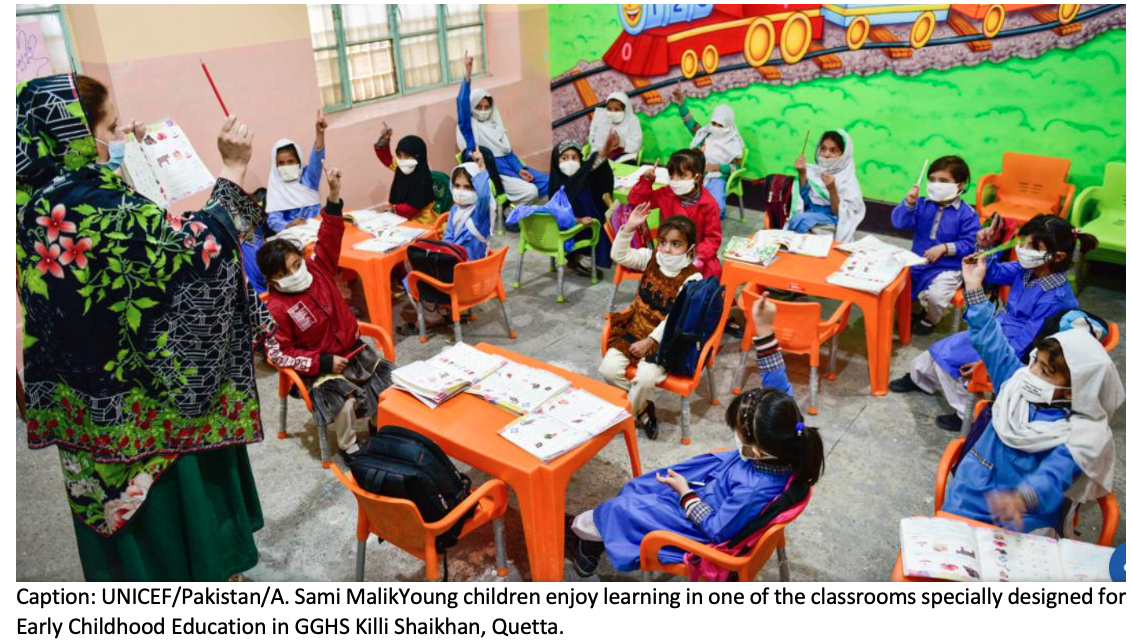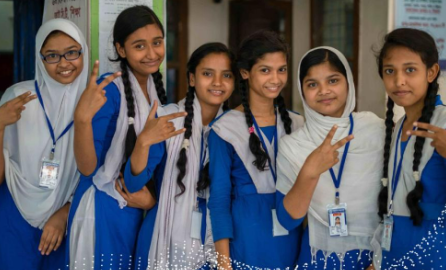Using data to transform girls’ education in Pakistan

-
Gender marker: G2-Promotes gender equality as a primary objective
-
Period of implementation: 2021 - 2024
-
Amount: EU provided EUR 8,040,000 to fund the Balochistan Basic Education Programme (BBEP, 2016-2020) and EUR 17,400,000 for its continuation, Balochistan Education Support (BES II, 2021-2024) with UNICEF contributing a further 4,800,000
-
Geographical area: Asia and the Pacific
-
Implementing partners:
-
Link to the project:
-
GAP III’s Areas:
-
Economic and social empowerment
-
Balochistan, Pakistan’s largest and poorest province, has few human and financial resources for education. Patronage, politics and corruption contribute to non-functioning schools and teacher absenteeism. Difficult terrain and lack of access to schools, harmful gender norms around employment, inheritance and marriage, and intergenerational educational poverty mean that parents invest more in the education of boys. Although the Balochistan Compulsory Education Act (2014) makes education free and compulsory for all 5–16-year-olds, 78% of girls are out of school. According to the Annual Status of Education Report (ASER) 2019, the literacy rate for aged 5-16 in Urdu is 26% (compared to 39% for boys) and the numeracy rate is 22% (compared to 33% for boys). These barriers to girls’ education make it hard to recruit women with sufficient literacy and numeracy skills to become teachers, perpetuating a negative downward spiral for girls and women.
In response, the EU has been worked in partnership with UNICEF and the Balochistan Secondary Education Department through the Balochistan Basic Education Programme (BBEP, 2016 - 2020) and its continuation, Balochistan Education Support (BES II, 2021 - 2024), to improve access to quality education for girls and boys and strengthen education management.
Gender-disaggregated data is key to evidence-based planning and resource allocation for girls’ basic education in an efficient, equitable, transparent and accountable way. Nevertheless, in reality, many development programme implementers feel that they have met gender requirements simply by reporting that equal numbers of men and women, girls and boys attended or were involved in activities.
However, the use of Education Management Information Systems (EMIS) in Balochistan is showing better ways to use school data.
For instance, Real Time School Monitoring (RTSM) data is uploaded to a live dashboard and analysed through RTSM report cards and statistical reports. In particular, RTSM report cards collate actionable evidence on school procurement, refurbishment and reopening, as well as discipline and penalties for absent staff and ghost teachers. Besides, monitoring reports at the divisional level support the Performance Management System, budget planning and senior manager accountability to parliamentarians and the public. In addition, education statistics reports compile gender-disaggregated data for analysis and planning of girls’ education needs in terms of access to girls’ schools, female teachers, and gender parity.
Therefore, all these tools support gender-responsive planning, resource allocation, transparency and accountability, thanks to a system that now provides data on nearly 15,000 schools, 60,000 teachers and over 1 million students from 95% of public schools.
The more fields of data collected in the school census, the more tailored the reports the system can generate, and the more comprehensive school development planning and school management mechanisms can be. In this way, RTSM data reports have the capacity to assess the root causes of barriers to equitable access at both the school and the system levels. It is this kind of holistic potential that makes the use of EMIS in Balochistan gender transformative.
Of course, data alone will not win the fight against corruption in education systems or the boy preference bias. The stamina and resources required to maintain real-time school monitoring reports and develop the capacity (at school, district and provincial levels) to input, analyse, report and act on results independently of international support is a test of sustainability. What is needed is a capacity bridge between planning and implementation to sustain girls’ education reforms through gender-responsive data collection and processing, as well as sufficient funds allocation.
“By working together with the community, we have removed some of the issues which caused students to have low achievements, in particular girls. They will now be able to access quality education in all schools covered in the programme.” Mr. Dawood Khan Khilji, Additional Secretary (Dev) at the Secondary Education Department.
